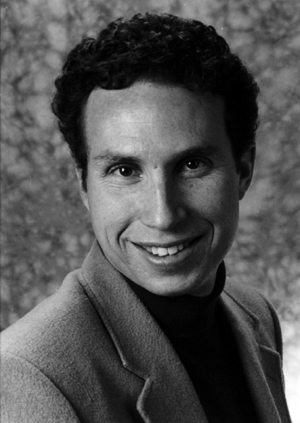Excerpts (between pp. 113-141) from: Why God Won’t Go Away, Brain Science and the Biology of Belief, by Andrew Newberg, M.D. and Eugene D’Aquili, M.D., PhD.; 2001; Ballantine Publishing Group.
Humans ... are natural mystics blessed with an inborn genius for effortless self-transcendence. If you ever "lost yourself" in a beautiful piece of music, for example, or felt "swept away" by a rousing patriotic speech, you have tasted in a small but revealing way the essence of mystical union. If you have fallen in love or have ever been wonder-struck by the beauty of nature, you know how it feels when the ego slips away and for a dazzling moment or two you vividly understand that you are a part of something larger.


Like all experiences, moods, and perceptions, these unitary states are made possible by neurological function. More specifically, they are the result of the softening of the sense of self and the absorption of the self into some larger sense of reality that we believe occurs when the brain's orientation area is deafferented, or deprived of neural input.
. . . rhythmic behaviors can lead to unitary states by causing the orientation area [of the brain] to be blocked from neural flow. The intensity of those unitary states depends upon the degree of neural blockage. Since the degree of that blockage can increase by any increment, and theoretically until there is a total blocking, a large spectrum of increasingly unitary states is possible. We call this span the
The most familiar point along the continuum is the baseline state of mind in which we experience most of our daily lives. We eat, we sleep, we work, we interact with others, and while we are consciously aware that we are, in some fashion, connected to the world arournd us (as part of a family, neighborhood, nation, and so on) we experience that world as something from which we are clearly set apart.
As we move up the unitary continuum, however, that separation becomes less and less distinct. We might be moved to a state of mild unitary absorptoin by art, or music, or walks in the autumn woods. We may reach deeper unitary states during periods of intense concentration or through the transforming intoxication of romantic love.
These activities, and the transcendent states they produce, are not religious in any formal sense, but in neurological terms they are similar to many unitary experiences produced by religious activity. These religious experiences exist along the same neurological continuum, and like all nonspiritual unitary states, their intensity is determined by the degree to which the orientation area is blocked from neural flow.
At low levels, this blockage results in mild unitary sensations, such as the feelings of unity and common inspiration shared by worshipers in a moving religious service. As we move along the continuum we find a progression of increasingly intense unitary states, characterized by feelings of spiritual awe and rapture. Where prolonged and rigorous rituals are involved, trance states may occur, featuring moments of ecstasy and hyperlucid visions. And at the farthest end of the continuum, where deafferentation would be most advanced, we find the profound states of spiritual union that have been described for us by the mystics.
. . . these advanced unitary states are usually beyond the reach of physically based ritual. The human body generally cannot sustain sufficient ritual intensity for a long enough period of time to allow deafferentation to proceed to such extremes. Mystics of all traditions have intuitively understood this, and have taught themselves to focus the inexhaustible meditative powers of the mind to carry them to these deeper states of union with the divine.
. . . .
The total shutdown of neural input would have a dramatic effect on both the right and left orientation areas. The right orientation area, which is responsible for creating the neurological matrix we experience as physical space, would lack the information it needs to create the spatial context in which the self can be oriented. Its only option, when totally deprived of sensory input, would be to generate a subjective sense of absolute spacelessness, which might be interpreted by the mind as a sense of infinite space and eternity; or conversely, as a timeless and spaceless void.
Meanwhile, the left orientation area, which we have described as crucial in the generation of the subjective sense of a self, would not be able to find the boundaries of the body. The mind's perception of the self now becomes limitless; in fact, there is no longer any sense of self at all.
In this state of total deafferentation of the orientation area, the mind would perceive a neurological reality consistent with many mystical descriptions of the ultimate spiritual union: There would be no discrete objects or beings, no sense of space or the passage of time, no line between the self and the rest of the universe. In fact, there would be no subjective self at all; there would only be an absolute sense of unity—withough thought, without words, and without sensation. The mind would exist without ego in a state of pure, undiferentiated awareness. The name Gene and I have used for this state of pure mind, of an awareness beyond object and subject, is Absolute Unitary Being, the ultimate unitary state.
. . . .
The achievement of Absolute Unitary Being is a rare event, but even those who fall far short find themselves in spiritual states of inexpressble power and sublimity. We believe that all mystical experiences, from the mildest to the most intense, have their biological roots in the mind's machinery of transcendence. To say this in a slightly more provocative way, if the brain were not assembled as it is, we would not be able to experience a higher reality, even if it did exist.
. . . .
. . . no matter how unlikely or unfathomable the accounts of the mystics may seem, they are based not on delusional ideas but on experiences that are neurologically real. Our understanding of brain processes predicts this, and our SPECT scan studies of Buddhists and Catholic nuns show that meditative, contemplative minds strive in that direction.
The neurological realness of Absolute Unitary Being is by no means proof of an absolute spiritual reality. ... On the other hand, by explaining mystical experience as a neurological function, we do not intend to suggest that it can't be something more. What we do suggest is that scientific research supports the possibility that a mind can exist without ego, that awareness can exist without self. In the neurological substance of Absolute Unitary Being, we find rational support for these inherently spiritual concepts and a scientific platform from which to explore the deepest implications of mystical spirituality.
. . . .
There's little doubt that the transcendent states from which religions rise are neurologically real—brain science predicts their occurrence, and our imaging studies, as well as others, have actually captured them on film. The deeper question is: Are these unitary experiences merely the result of neurological functions—which would reduce mystical experience to a flurry of neural blips and flashes—or are they genuine experiences which the brain is able to perceive? Could it be that the brain has evolved the ability to transcend material existence, and experience a higher plane of being that actually exists?
The mystics certainly insist that they have experienced just such a reality; a realm of being more real than the material world that we trust without question, a dimension with no sensatoin of space, no passage of time, no clear boundaries between the self and the universe, and ample room for the actual possibility of God.
Science and common sense, on the other hand, tell us such a thing is not possible: Nothing can be more real than the material universe within which all real things are contained. Our own scientific inquiry, in fact, began with this assumption. But science has surprised us, and our research has left us no choice but to conclude that the mystics may be on to something, that the mind's machnery of transcendence may in fact be a window through which we can glimpse the ultimate realness of something that is truly divine. This conclusion is based on deductive reason, not on religious faith—it is a terrifically unscientific idea that is ironically consistent with careful, conventional science—but before it will make any sense, we must second-guess all our assumptions about material reality, and understand how the mind decides what is essentially and fundamentallly real.